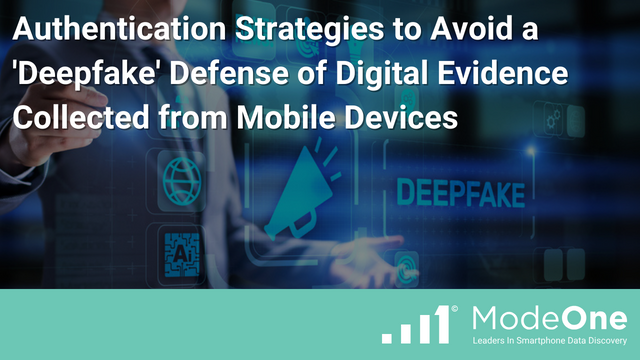You have an airtight case with a smoking-gun video of the opposing party taking your client’s property. But your opponent cries foul, accusing you of tampering with the evidence and creating a deepfake. Your case becomes mired in an evidentiary issue that could have been avoided.
The term deepfake combines the words “deep learning” and “fake.” It applies to photographs and audio and video recordings modified by artificial intelligence (machine learning) to make something actually false appear to be true or real. The technology can quickly change appearances and faces in visual works and create audio from limited training data, intending to deceive listeners and viewers.
Although deepfakes first appeared in 2017, governments and the public have recently grown concerned about the damage they can inflict on democracy and national security when politicians, heads of state, or other public figures are depicted misbehaving, making incendiary comments, or engaging in complicit or illicit activity.
Sophisticated deepfake videos use thousands of images to train algorithms to recognize and manipulate a face. For example, in 2021, deepfake videos of Tom Cruise circumvented TikTok’s deepfake detection software with a video algorithm that used over 13,000 images of Cruise. But that level of detail is not necessary to create a deepfake today. Anyone with an iPhone and a single photo or video clip can use free apps to create deepfakes. Because of this, developing strategies to authenticate audio and video files and photographs is essential BEFORE you use them to support your case. Otherwise, your opponent may object to the media’s authenticity, calling it fake and accusing you of tampering with the evidence.
Avoiding the ‘Deepfake’ Defense
Firstly, fact-check the photograph or media file with primary sources and historical facts. Ask yourself whether it is grounded in historical facts or verifiable events. Cross-check the image or file with facts, other reports, and available primary sources, such as official government or corporate communications and eye-witness reports. If the picture or file is accurate or valid, it will be consistent with historical events and facts, other accounts, and primary sources.
Suppose an alleged photo or media file passes the sniff test. In that case, i.e., no historical facts or primary sources conflict with the evidence presented, a request for admission of a photograph can establish evidentiary foundations that would otherwise consume trial time. Using requests for admission for this purpose is common practice in state and federal courts. Yet, asking an answering party to admit that a document is genuine without more is insufficient. You must include all foundational questions in the request for admission, attach a copy of the photograph, and incorporate it by reference in the request.
For photographs, audio, video, and multimedia files, you must generate hash values of the evidence and collection logs relevant to obtaining the media files, including date stamps at the time of collection, target device details, and the identification of the custodian. It would be best if you also collected all the available metadata associated with the media files and the other relevant data on the provenance or origin of the media. Suppose you or your staff cannot marshal this information, or there is a question on the authenticity of the media files. In that case, you must hire an expert witness to examine and evaluate the audio and video files to determine if a recording is consistent with how it is alleged to have been produced.
The expert should have training and experience in the tasks necessary to acquire, prepare, examine, and interpret the digital evidence, be it audio or video files or photographs. An expert or analyst should know the best practices and methodologies to prepare, examine, and interpret digital evidence in legal matters.
The Scientific Working Group on Digital Evidence (SWGDE) develops guidance and recommendations for the forensic community on digital evidence. It recommends scientific methodology in preparing, examining, and analyzing the evidence. When looking to identify an expert witness to authenticate digital media collected from cell phones and other mobile devices, review the published SWGDE materials to know what you must look for to confirm the knowledge, experience, processes, credibility, and reputation of your expert witness.
